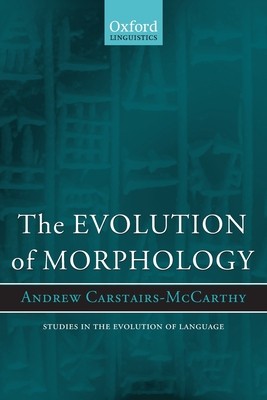
- We will send in 10–14 business days.
- Author: Andrew Carstairs-McCarthy
- Publisher: Oxford University Press, USA
- ISBN-10: 0199202680
- ISBN-13: 9780199202683
- Format: 15.5 x 23.1 x 1.5 cm, softcover
- Language: English
Reviews
Description
This book considers the evolution of the grammatical structure of words in the more general contexts of human evolution and the origins of language. The consensus in many fields is that language is well designed for its purpose, and became so either through natural selection or by virtue of non-biological constraints on how language must be structured. Andrew Carstairs-McCarthy argues that in certain crucial respects language is not optimally designed. This can be seen, he suggests, in the existence of not one but two kinds of grammatical organization - syntax and morphology - and in the morphological and morpho-phonological complexity which leads to numerous departures from the one-form-one-meaning principle.
In this stimulating and carefully argued account Professor McCarthy offers a powerful challenge to conventional views of the relationship between syntax and morphology, to the adaptationist view of language evolution, and to the notion that language in some way reflects 'laws of form'. This fundamental contribution to understanding the nature and evolution of language will be of wide interest to linguists of all theoretical persuasions as well as to scholars in cognitive science and anthropology.
- Author: Andrew Carstairs-McCarthy
- Publisher: Oxford University Press, USA
- ISBN-10: 0199202680
- ISBN-13: 9780199202683
- Format: 15.5 x 23.1 x 1.5 cm, softcover
- Language: English English
This book considers the evolution of the grammatical structure of words in the more general contexts of human evolution and the origins of language. The consensus in many fields is that language is well designed for its purpose, and became so either through natural selection or by virtue of non-biological constraints on how language must be structured. Andrew Carstairs-McCarthy argues that in certain crucial respects language is not optimally designed. This can be seen, he suggests, in the existence of not one but two kinds of grammatical organization - syntax and morphology - and in the morphological and morpho-phonological complexity which leads to numerous departures from the one-form-one-meaning principle.
In this stimulating and carefully argued account Professor McCarthy offers a powerful challenge to conventional views of the relationship between syntax and morphology, to the adaptationist view of language evolution, and to the notion that language in some way reflects 'laws of form'. This fundamental contribution to understanding the nature and evolution of language will be of wide interest to linguists of all theoretical persuasions as well as to scholars in cognitive science and anthropology.


Reviews